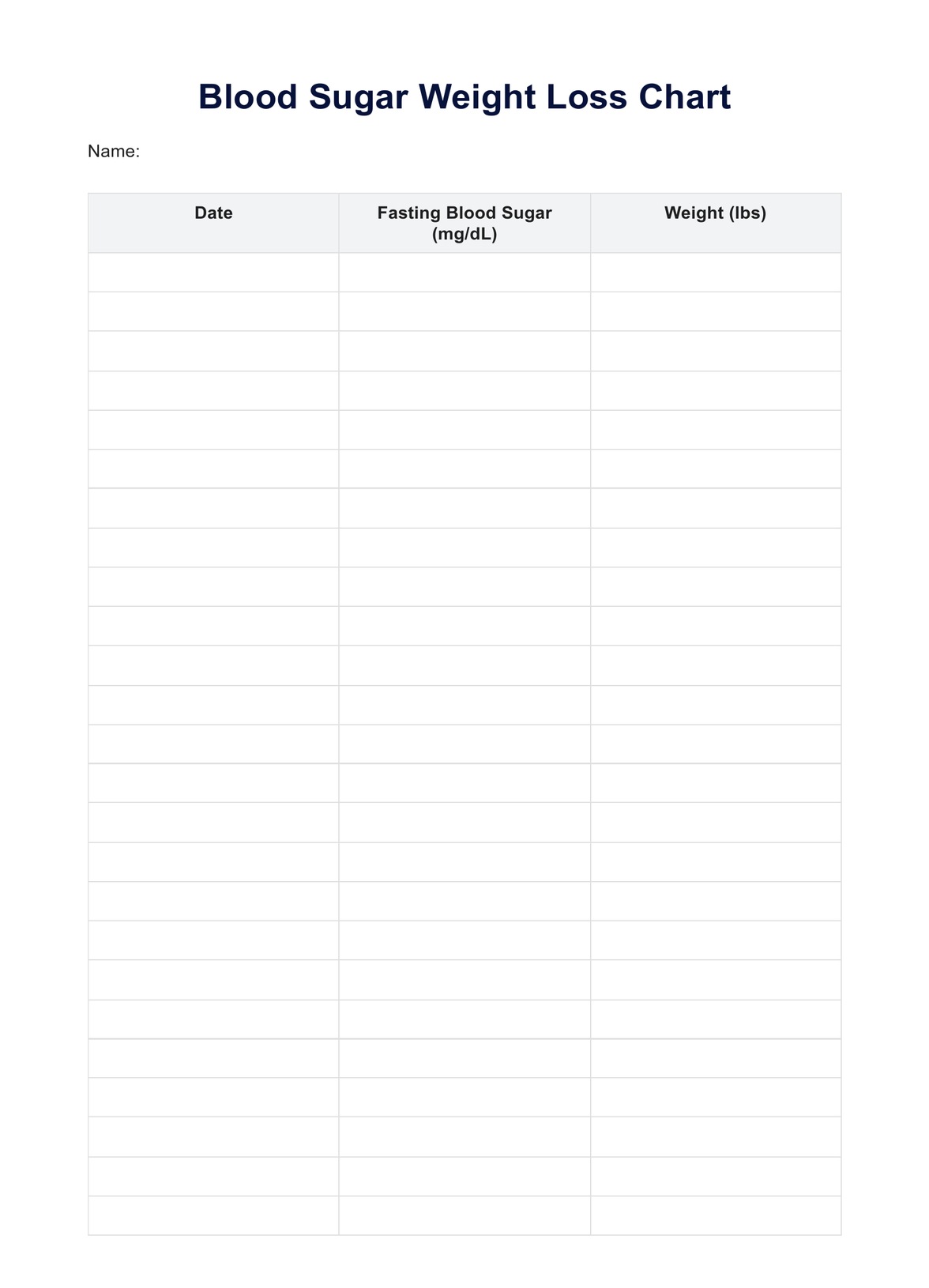Creating a Blood Sugar Weight Loss Chart template is simple. Begin by categorizing columns for meals, snacks, physical activity, and blood sugar readings.

Blood Sugar Weight Loss Chart
Get a free blood sugar weight loss chart template and example PDF for tracking progress in managing levels and achieving weight loss goals. Stay well-balanced!
Blood Sugar Weight Loss Chart Template
Commonly asked questions
These templates are used daily to track meals, monitor blood sugar levels, and record physical activity. Regular use ensures a comprehensive overview of your health habits, aiding in identifying patterns and trends.
Utilize the templates by consistently inputting data on meals, snacks, exercise, and blood sugar readings. Regular analysis of the completed chart allows you to make informed decisions about your health and adjust your lifestyle accordingly.
EHR and practice management software
Get started for free
*No credit card required
Free
$0/usd
Unlimited clients
Telehealth
1GB of storage
Client portal text
Automated billing and online payments











